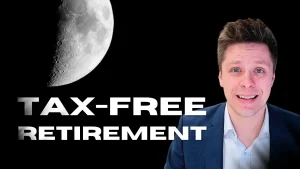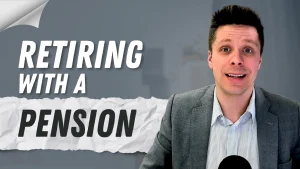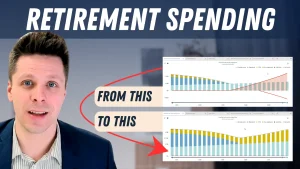[vc_row css=”.vc_custom_1612380408194{padding-top: 20px !important;padding-bottom: 20px !important;}”][vc_column][vc_video link=”https://youtu.be/CZ9luOOhz1c” css=”.vc_custom_1699022153690{padding-top: 20px !important;padding-bottom: 20px !important;}”][vc_column_text css=”.vc_custom_1699024203181{padding-top: 20px !important;padding-bottom: 20px !important;}”]Do you find yourself burdened by high taxes during retirement? Focusing on tax-efficient retirement withdrawal strategies could save you thousands, if not hundreds of thousands of dollars in taxes throughout your retirement.
The Retirement Tax Challenge
Retirement success hinges on three critical factors: your savings, the accounts you invest in, and the performance of your retirement portfolio. Once you’re retired, you no longer need to worry about where and how much to save. Instead, it’s time to focus on a strategic withdrawal plan. Let’s dive into a real-life example featuring “Jim,” a retiree who had recently turned 60. Jim had sufficient savings, including $900,000 in an RRSP, $300,000 in a non-registered account, and $100,000 in a TFSA. His monthly expenses were $5,400, and his life expectancy was 84.
Strategies for Tax-Efficient Withdrawals
In the first strategy, Jim aimed to keep his current tax bill low by deferring RRSP withdrawals for as long as possible. This involved relying on CPP and TFSA early on, moving to non-registered accounts, and finally tapping into the RRSP at 84. Unfortunately, this approach led to substantial estate and income taxes upon Jim’s death.
The second strategy involved a balanced approach, aiming for an optimal taxable income of $69,000 per year. To achieve this, Jim began drawing on his RRSP earlier, reducing the amount left in his registered accounts significantly. This strategy ultimately resulted in lower estate and income taxes, leaving Jim with over $1.6 million to pass on to his kids and grandkids.
The Impact of Tax-Efficient Planning
By reviewing a couple of tax-efficient retirement withdrawal strategies and choosing the best one for him, Jim increased his legacy by over $150,000 compared to the first approach, demonstrating the immense impact of tax-efficient planning.
A Personalized Approach
To take control of your retirement finances and optimize your tax savings, click here to access our retirement withdrawal questionnaire. It takes just five minutes, you’ll receive a personalized video from me with strategies tailored to your unique situation.
[/vc_column_text][/vc_column][/vc_row]





